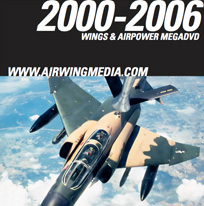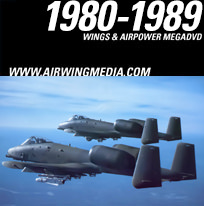UPDATED: First Flight Achieved!
Textron AirLand, LLC, a joint venture between Textron Inc. and AirLand Enterprises, LLC, announced that the Scorpion Intelligence, Surveillance and Reconnaissance (ISR)/Strike aircraft completed its first flight at 10:30 AM Central Time.
The aircraft took off from McConnell Air Force Base in Wichita, Kansas and conducted a range of handling maneuvers for approximately 1.4 hours of flight. The flight marks one of the fastest developments of a U.S.-built tactical jet, progressing from initial design to first flight in less than 24 months.
“Today’s first flight is a major milestone for the Scorpion as the program transitions into the flight test phase,” commented Textron CEO Scott Donnelly. “When the design phase began less than two years ago, we were confident that we would deliver a uniquely affordable, versatile tactical aircraft by taking advantage of commercial aviation technologies and best practices. Today’s flight met all expectations, and keeps us on track towards certification and production,” he added.
Scorpion’s first flight was crewed by pilot Dan Hinson, an engineering test pilot with over 5,000 flight hours in 79 different types of aircraft, and co-pilot David Sitz.
“The flight was completed according to plan,” said Hinson. “Having flown many tactical aircraft throughout my 23-year career with the US Navy and with other aircraft manufacturers, I can say that the Scorpion compares very favorably to more costly aircraft currently used for low-threat missions. It showed impressive stability and responsiveness closely matching all of the predicted parameters for today’s maneuvers – it’s going to be a highly capable aircraft for the ISR and homeland security mission set.”
[hr4]
In a building known as the “Glass House” is where Cessna Aircraft employees work on projects meant to remain secret until announced.
That’s where a group of primarily Cessna engineers, technicians and mechanics built a plane known as the Scorpion over the past couple of years.
The plane was built under a joint venture of Textron AirLand Enterprises, LLC. Textron, of course, owns Cessna.
The plane announced to the world in September is expected to make its first flight next week from McConnell Air Force Base.
Bill Anderson is President of Textron-AirLand and is also Cessna Vice President of Military Programs.
Anderson says, “This is a Textron-AirLand project. But it couldn’t have been done without Cessna’s support and Cessna’s expertise. We highly leveraged all of Cessna’s processes and their commercial best practices. This is bringing commercial best practices to a military aircraft to keep the acquisition costs down and keep the cost per hour down.”
Anderson says the goal is to keep the Scorpion’s purchase price below $20-million. He says the cost to operate the Scorpion will be below $3,000 per hour. That, he says, compares to $15,000 per hour it costs the US Air Force to operate the F-16.
“So you can see the tremendous savings the Scorpion aircraft is bringing to the military market.”
Anderson says those lower costs will help market the Scorpion in an environment of tighter military budgets.
Anderson describes the Scorpion as a multi-mission aircraft capable of striking targets in the air, one the ground or in its intelligence, surveillance, reconnaissance role.
“It’s a gamble,” says Anderson referring to Textron and AirLand Enterprises putting up the money to build the Scorpion without the Pentagon or any other specific customer requesting it.
But Anderson says they believe there is a gap in the market for a plane with the Scorpion’s capabilities.
[raw][slideshow controlnav=”false” directionnav=”true”]
https://airwingmedia.com/wp-content/uploads/2013/12/Scorpion-Jet-1.jpg
https://airwingmedia.com/wp-content/uploads/2013/12/Scorpion-Jet-2.jpg
https://airwingmedia.com/wp-content/uploads/2013/12/Scorpion-Jet-3.jpg
https://airwingmedia.com/wp-content/uploads/2013/12/Scorpion-Jet-4.jpg
https://airwingmedia.com/wp-content/uploads/2013/12/Scorpion-Jet-5.jpg
https://airwingmedia.com/wp-content/uploads/2013/12/Scorpion-Jet-6.jpg
https://airwingmedia.com/wp-content/uploads/2013/12/Scorpion-Jet-7.jpg
[/slideshow][/raw]
[hr4]
Chief Engineer Dale Tutt says he is confident the Scorpion will meet the expected performance goals. Tutt says the team has been checking systems.
Tutt says, “We’ve really done everything we can to make sure the airplane will perform as intended so that when we get up and start flying we have very high expectations it will meet all the intended performance and all the requirements.”
Tutt estimates 95% of the plane’s structure came from Cessna and local suppliers.
He says, “Reusing existing components or off the shelf components like engines save a tremendous amount of development time.”
If everything goes as planned the new plane will be pulled out of the engineering building at the Cessna Pawnee facility site and will taxi onto the adjoining McConnell runway for first flight next week.
Timelapse Footage of Scorpion Jet Assembly
Internal Payload Bay
[image src=”/wp-content/uploads/2013/12/Scorpion-Jet-Payload-Bay.jpg” responsive=”true” lightbox=”true”]
[hr4]
External Stores
[image src=”/wp-content/uploads/2013/12/Scorpion-Jet-Attach-Points.jpg” responsive=”true” lightbox=”true”]
[hr4]
Specifications
| Aircraft Length | 43 ft 6 in |
| Wingspan | 47 ft 4 in |
| Height | 14 ft 0 in |
| Standard Empty Weight | 11,800 lbs |
| Max Takeoff Weight | 21,250 lbs |
| Max Internal Fuel Load | 6,000 lbs |
| Max Internal Payload Bay | 3,000 lbs |
| Thrust | ~8,000 lbs |
| Max Speed | 450 KTAS |
| Service Ceiling | 45,000 ft |
| Ferry Range | 2,400 NM |
[hr4]





